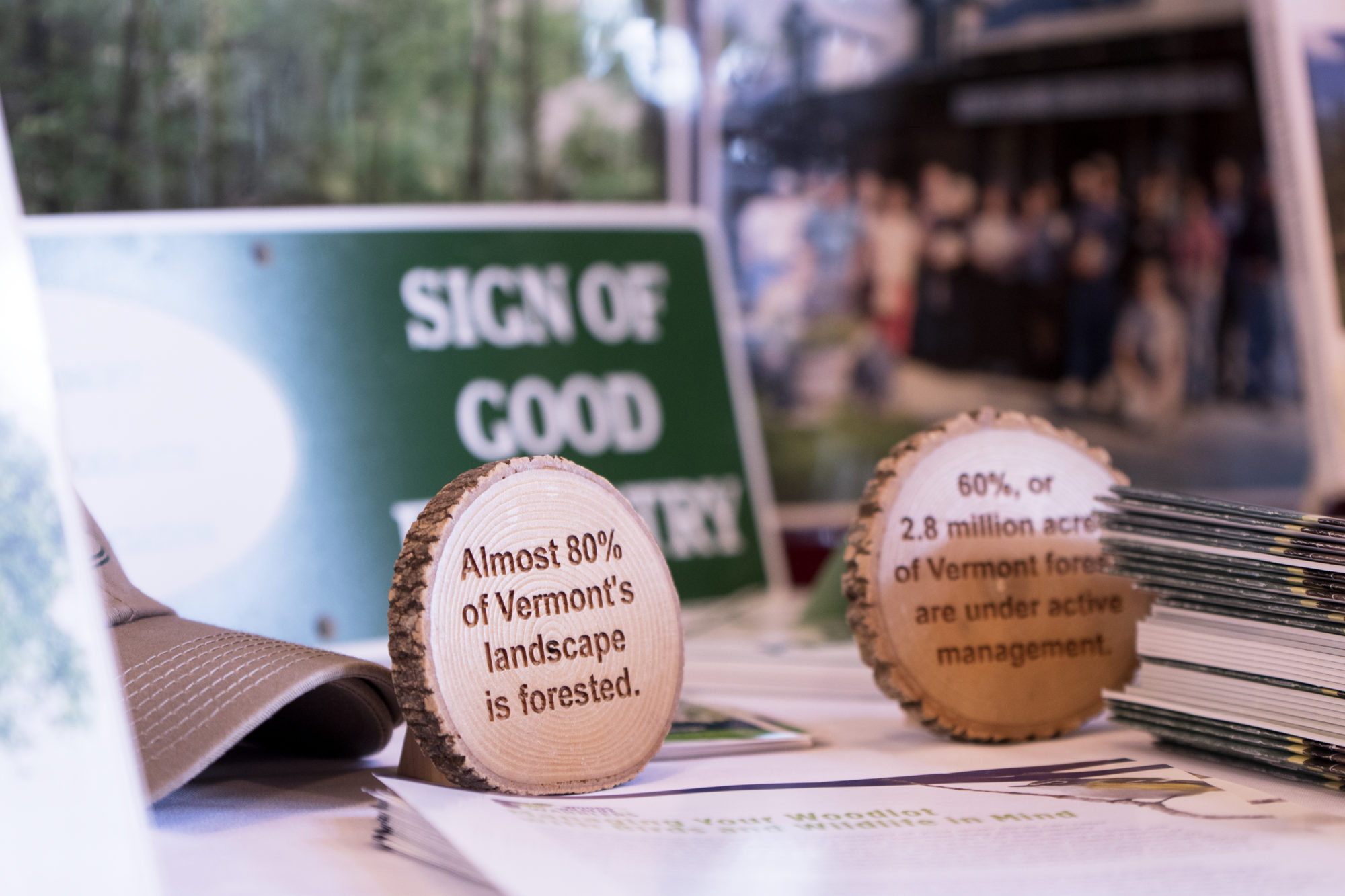Building a Network to Create a New Forest Culture in Vermont
July 17, 2018

By Christine McGowan
As development creeps into our rural landscapes and woodlot ownership changes hands, our forests face an uncertain future. Vermonters value working landscapes, but do they value the work it takes to keep these landscapes intact? Not unlike other Vermont business sectors, our forest and wood products industry has struggled with an aging workforce, shifting markets and economic pressures that have caused a contraction in jobs and a feeling of futility in many of Vermont’s rural communities at a time when they can’t take much more.
In late June, more than 150 people from across Vermont’s forest and wood products supply chain came together for the 1st Annual Vermont Forest Industry Summit at Burke Mountain Resort, and launched the Vermont Forest Industry Network with a mission of advancing new and existing markets for Vermont forest and wood products, from high quality furniture to construction material to thermal biomass products such as chips and pellets.
The Summit was packed with landowners, foresters, loggers, truckers, mill owners, wood product manufacturers as well as business consultants, trade organizations, lenders and even our governor, all of whom want to see those who make their living working in the woods or creating products out of trees succeed.
Launching the Vermont Forest Industry Network
The Summit delved into several issues facing our forest and wood products industry, from finding new or expanded markets for low grade wood to strengthening connections between primary mills and secondary wood manufacturers and woodworkers in Vermont. Speakers talked about how to improve the bottom line through lean manufacturing and improving company culture. Others talked about global trends in wood such as mass timber that could impact Vermont forest and wood products businesses. These and other topics will be the focus of the Vermont Forest Industry Network moving forward.

Forest experts discuss the future of Vermont’s forests, and the role the industry plays in keeping our forests as forests. From left to right: Sean Ross, Lyme Timber Company; Craig Rawlings, Forest Business Network; Commissioner Michael Snyder, Vermont Department of Forests, Parks and Recreation; Kathryn Fernholz, Dovetail Partners, Inc.; and Alex Barrett, Long View Forest Management. Photo credit: Erica Houskeeper
Creating a network takes time. It can only happen when the right people align together at the right time around the right purpose. It takes the patience to know what ‘ready’ looks like. It also requires trust. Working in a networked way involves being honest about good – and bad – ideas, and believing that honesty will be matched by humility. It means setting personal and political difference aside to make space for new ways of approaching a problem and new people who may have a new spin on ‘we tried that already.’
But most of all, it takes commitment – both from those who build the framework of the network and from those who fill the space inside it. Vermont’s forest and wood products industry is as old as Vermont itself and is enmeshed in our history, but it’s still vulnerable to unraveling if it’s not nurtured and challenged to innovate and improve. The Summit sparked many ideas worth exploring, and the Vermont Forest Industry Network will help turn the best of these ideas into action.
As the Vermont Forest Industry Network grows, so will the opportunities to develop new wood products made in Vermont, better ways to provide service to the industry and chances to connect more deeply with customers who want to know the people behind the skidder or the workbench. Ideally, a year from now, when we host the 2nd Annual Vermont Forest Industry Summit, several Value Chain Action Teams will be ready to report back on efforts to advance some of the great ideas that came out of this year’s Summit and the workshops that preceded it.

Colleen Goodridge (left) of Goodridge Lumber talks with Paul Frederick, Wood Utilization Forester at the Vermont Department of Forests, Parks and Recreation, during the Vermont Forest Industry Summit reception. Photo credit: Erica Houskeeper
Goals for the Future
As I stood in the back of the ballroom during the closing session of the Vermont Forest Industry Summit listening to a panel of young business leaders from all parts of the forest and wood products supply chain talk about the future, I felt their hope. A forester, a logger, a mill owner and a couple of wood products manufacturers shared the stage with two educators training the next generation of foresters, loggers, millworkers and woodworkers. They recognize the challenges ahead, whether they are weak markets for low grade wood, invasive pests that threaten our forests or the “Amazon effect” on everything from cardboard boxes to retail stores. But they also see the opportunities that new technologies offer their generation, from forest mapping to Facebook.
These are the people who will shape the industry in the years to come, and the future of our forests is largely dependent on their success. My hope is that the Vermont Forest Industry Network will provide the space to solve industry challenges, seize opportunities, and ultimately create a new forest culture in Vermont that values not only the incredible forested landscape we all cherish, but also the people and businesses who help keep our forests as forests.
To learn more about the Vermont Forest Industry Network, visit the Vermont sustainable Jobs Fund’s Forest Products Program at www.vsjf.org.
###
Christine McGowan is director of the Forest Products Program at the Vermont Sustainable Jobs Fund, a nonprofit organization committed to nurturing the sustainable development of Vermont’s economy. Learn more at www.vsjf.org and www.facebook.com/VermontSustainableJobsFund.




